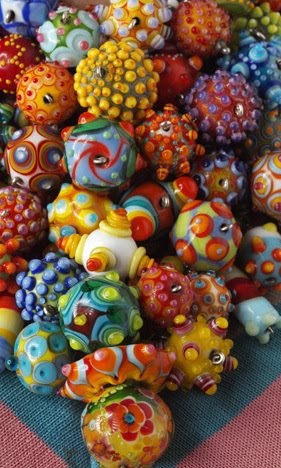
When I photographed my ruffle beard I realized that my hoodie also had a lot of handwork on it. Sita asked me how this iron- on stuff works. Hot- fix or heat- set studs are mostly inexpensive and easy to use.

I arranged these to look like knit stitches or reptile skin. This is the same type of stuff that's used on commercially produced garments that say, "Princess," in rhinestones.

I buy my pieces wholesale from a local supplier. The shapes are thin, concave pieces of metal. The backs are pre- coated with a thin layer of solidified hot glue. Using these is as simple as setting them down on a flat fiber surface (shiny side up) and gently applying a hot, dry iron to them. They should be heated for a few seconds- enough to allow the adhesive to melt, and for the glue to flow and bond to the fibers of the fabric. When creating a larger design or letters, I carefully apply studs and heat a small section at a time. I focus on using the tip of the iron where there are no steam vents. If the iron is applied at an angle (like a plane landing) it is likely that the arranged pattern of studs will get distorted. I had the best results when applying the iron straight down onto the fabric, perpendicular to the surface.

Here I attached studs over the ropes of the leafcutter ants on this Beehive Collective patch. Because these were applied to a slippery surface, the glue did not adhere well initially. I removed all of the metal pieces, and sewed a running stitch along the ropes to create a tooth in the surface of the satin fabric. The studs have been stuck on for several years now.

It took me two days to lay out and iron on these stones. The smallest ones are called naiheads; they're 2 millimeters in diameter. The largest ones are cone spikes, not hot- fix studs but spikes with prongs coming off the back to set them in. If you click twice on these images they'll get really large.

I arranged these to look like knit stitches or reptile skin. This is the same type of stuff that's used on commercially produced garments that say, "Princess," in rhinestones.

I buy my pieces wholesale from a local supplier. The shapes are thin, concave pieces of metal. The backs are pre- coated with a thin layer of solidified hot glue. Using these is as simple as setting them down on a flat fiber surface (shiny side up) and gently applying a hot, dry iron to them. They should be heated for a few seconds- enough to allow the adhesive to melt, and for the glue to flow and bond to the fibers of the fabric. When creating a larger design or letters, I carefully apply studs and heat a small section at a time. I focus on using the tip of the iron where there are no steam vents. If the iron is applied at an angle (like a plane landing) it is likely that the arranged pattern of studs will get distorted. I had the best results when applying the iron straight down onto the fabric, perpendicular to the surface.

Here I attached studs over the ropes of the leafcutter ants on this Beehive Collective patch. Because these were applied to a slippery surface, the glue did not adhere well initially. I removed all of the metal pieces, and sewed a running stitch along the ropes to create a tooth in the surface of the satin fabric. The studs have been stuck on for several years now.

It took me two days to lay out and iron on these stones. The smallest ones are called naiheads; they're 2 millimeters in diameter. The largest ones are cone spikes, not hot- fix studs but spikes with prongs coming off the back to set them in. If you click twice on these images they'll get really large.



who do you order the metal pieces from?
ReplyDeleteI get them from Wolf E. Myrow in Providence, Rhode Island.
ReplyDelete